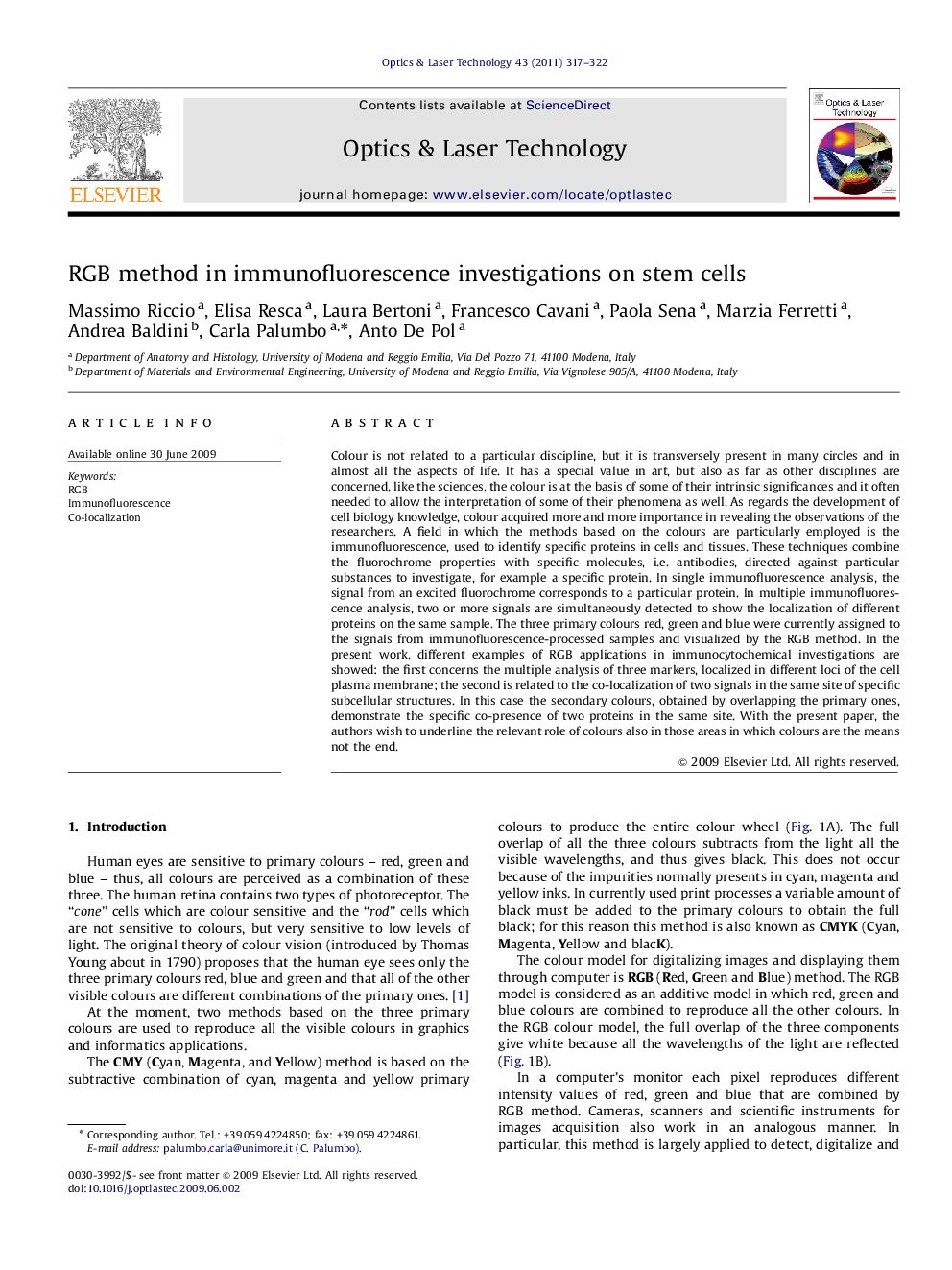| Article ID | Journal | Published Year | Pages | File Type |
|---|---|---|---|---|
| 733517 | Optics & Laser Technology | 2011 | 6 Pages |
Colour is not related to a particular discipline, but it is transversely present in many circles and in almost all the aspects of life. It has a special value in art, but also as far as other disciplines are concerned, like the sciences, the colour is at the basis of some of their intrinsic significances and it often needed to allow the interpretation of some of their phenomena as well. As regards the development of cell biology knowledge, colour acquired more and more importance in revealing the observations of the researchers. A field in which the methods based on the colours are particularly employed is the immunofluorescence, used to identify specific proteins in cells and tissues. These techniques combine the fluorochrome properties with specific molecules, i.e. antibodies, directed against particular substances to investigate, for example a specific protein. In single immunofluorescence analysis, the signal from an excited fluorochrome corresponds to a particular protein. In multiple immunofluorescence analysis, two or more signals are simultaneously detected to show the localization of different proteins on the same sample. The three primary colours red, green and blue were currently assigned to the signals from immunofluorescence-processed samples and visualized by the RGB method. In the present work, different examples of RGB applications in immunocytochemical investigations are showed: the first concerns the multiple analysis of three markers, localized in different loci of the cell plasma membrane; the second is related to the co-localization of two signals in the same site of specific subcellular structures. In this case the secondary colours, obtained by overlapping the primary ones, demonstrate the specific co-presence of two proteins in the same site. With the present paper, the authors wish to underline the relevant role of colours also in those areas in which colours are the means not the end.
